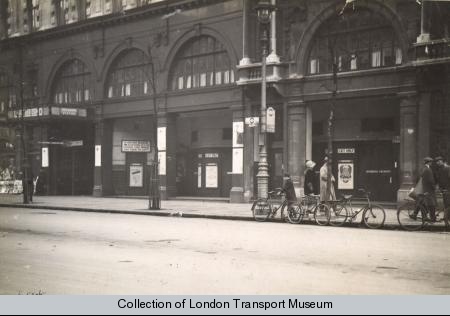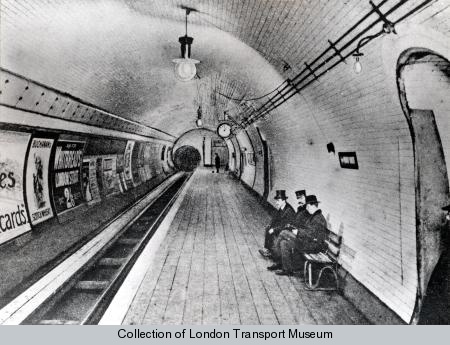On this morning 80 years ago, just after midnight, a tube station closed its doors for the very last time, and a few hours later, two new platforms came into use at another station just a couple of hundred yards away.
Before this, passengers switching between the Central Line and the Piccadilly Line had to leave one station, walk along a main road and go into another station. A six minute journey has been cut to less than a minute.
 It’s the 80th anniversary of the closure of British Museum Station, and the completion of a major upgrade of Holborn Station.
It’s the 80th anniversary of the closure of British Museum Station, and the completion of a major upgrade of Holborn Station.
The British Museum tube station on the Central Line was opened near to New Oxford Street in July 1900, but six years later, the Piccadilly Line opened its own tube station, on the corner of Holborn and Kingsway.
Although rival companies, it was still fairly common for tube lines to design their services to share stations and interchanges — but the Piccadilly Line preferred the frankly, superior Holborn location, and also their tube lines would have struggled to curve around to the British Museum site.
So, two stations, 250 yards apart from each other — and an interchange that was highly inconvenient.
Within 2 years, the Central Line[1] was seeking powers in addition to its Liverpool Street extension to also dig a tunnel linking the British Museum Station with that of Holborn.
In 1913, a proposal was made to close the British Museum Station[2] and powers would be sought to enlarge the Central Line tunnels east of Kingway and link them to Holborn Station.
Damn the war got in the way!
However, in 1932 works were agreed[3] to enlarge the Central Line tunnels at Holborn and create two new platforms there.
At the same time, the old Leslie Green designed station, which has used lifts to take passengers down to the Piccadilly Line platforms was swept away and a modern new Charles Holden designed station with escalators was constructed.
The new Holborn station replaced the old building and lift shafts with seven new escalators — four of which at 147 feet and 7 inches in length were at the time, the longest in the world[5].
A new type of booking office, known as a passimeter had also been installed.
[singlepic id=11 w=500 float=center]
The new station opened in May 1933[4] as Holborn (Kingsway) Station. It dropped the Kingway bit in the 1960s.
[singlepic id=13 w=500 float=center]
However, it was on the 25th September 1933 that the Central Line platforms were finally opened to the public[5].
On one of the new platforms was a new type of signal cabin with power controlled levers and there were also relay and battery rooms, emergency tunnel telephones and the automatic train stops which are in general use.
That wasn’t the last change to the Holborn station though, as the Piccadilly Line had three platforms, and third was taken out of action when the nearby Aldwych station closed.
A 3D-layout of the station as it is today is here.
The closed British Museum station was reused as an air-raid shelter during WW2, and the surface building survived until 1989, but was demolished, and is now a branch of the Nationwide Building Society.
[singlepic id=14 w=500 float=center]
Although the platforms have been removed, you can still see the old station from the Central Line trains as they pass by — just peer through the windows to the left hand side as you leave either TCR or Holborn stations.
- [1] The Times, Saturday, Nov 21, 1908;
- [2] The Times, Thursday, Nov 27, 1913;
- [3] The Times, Tuesday, Jan 19, 1932;
- [4] The Times, Tuesday, May 16, 1933;
- [5] The Times, Monday, Sept 25, 1933;









Do you know anything of the current plans to redevelop Holborn station?